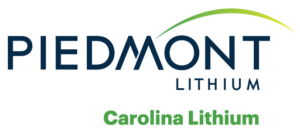Minimizing Impacts from Our Blasting Operations
Blasting technology has advanced significantly in recent years. Today’s blasting is highly controlled, using electronic detonation to maximize the efficiency. These safe, highly targeted and coordinated blasts typically last only a few seconds and are strategically designed to absorb impact to mitigate residual effects. Computer and chemical technologies allow for precision and efficiency. Much like noise cancellation headphones, we can design our blasts to create a cancelling effect, thereby reducing vibrations.
In modern blasting, every blast is custom engineered based on unique variables, such as its location, geologic conditions, orientation to neighbors, and more to ensure safe, compliant operations that minimize disturbances for those nearby.
Our blasting will be conducted according to state mining regulations and federal recommendations. It is being designed for vibration levels within the limits of the “Z-Curve” established by the U.S. Bureau of Mines (USBM). More than 40 years of data illustrate that staying within the USBM limits causes no damage to offsite structures. Blasts are being planned to be well within these standards – with most expected to be lower than 50% of allowable levels.
We plan to collect data from each blast to assess our impact and adjust plans to ensure that vibrations and air blasts are in compliance, with minimal disruptions to nearby neighbors. Data will be recorded on seismographs and may be audited by the state.
What will blasting feel like for nearby neighbors?
Blasting engineers are very adept at minimizing the perception of blasting. Neighbors within 2,000 feet of a blast may perceive vibrations. However, the perception of the vibration depends on a range of factors, including the weather, if someone is inside or outdoors, and their orientation from the blast.
Research shows that there are two types of vibrations that typically occur from blasting activities: an air pulse and an air blast. An air pulse is similar to a strong gust of wind; an air blast is the noise or air pressure generated from a blast. Both will decrease rapidly with distance from the blast site.
Modern Blasting
Modern blasting is very different from the explosive blasting of the past that some local community members remember from former mining operations. Actually, very little “explosive” will be used.
In modern blasting, the primary agent is a liquified product, called an emulsion, that can be safely transported on the highway as an oxidizer, no different than mineral oil. The emulsion is activated only when loaded into the holes at the time of blasting. All blasting companies in this area utilize emulsion as their primary blasting agent, and it is safely utilized in a number of industries – from construction to quarrying and mining – on a daily basis in North Carolina and across the United States.
How often will you blast?
Initially, we plan to only blast once per day, likely no more than twice per day, as needed and depending on scheduling requirements. Piedmont will communicate with nearby residents about blasting activities. We plan to share a regular blasting schedule on our website and provide a recorded message for neighbors along with emails and onsite signs.
No blasting will be conducted until one hour after sunrise, within one hour of sunset, or on the following days:
- Sundays
- Christmas Day
- Good Friday
- New Year’s Day
- Memorial Day
- Independence Day
- Labor Day
- Veteran’s Day
- Thanksgiving Day
